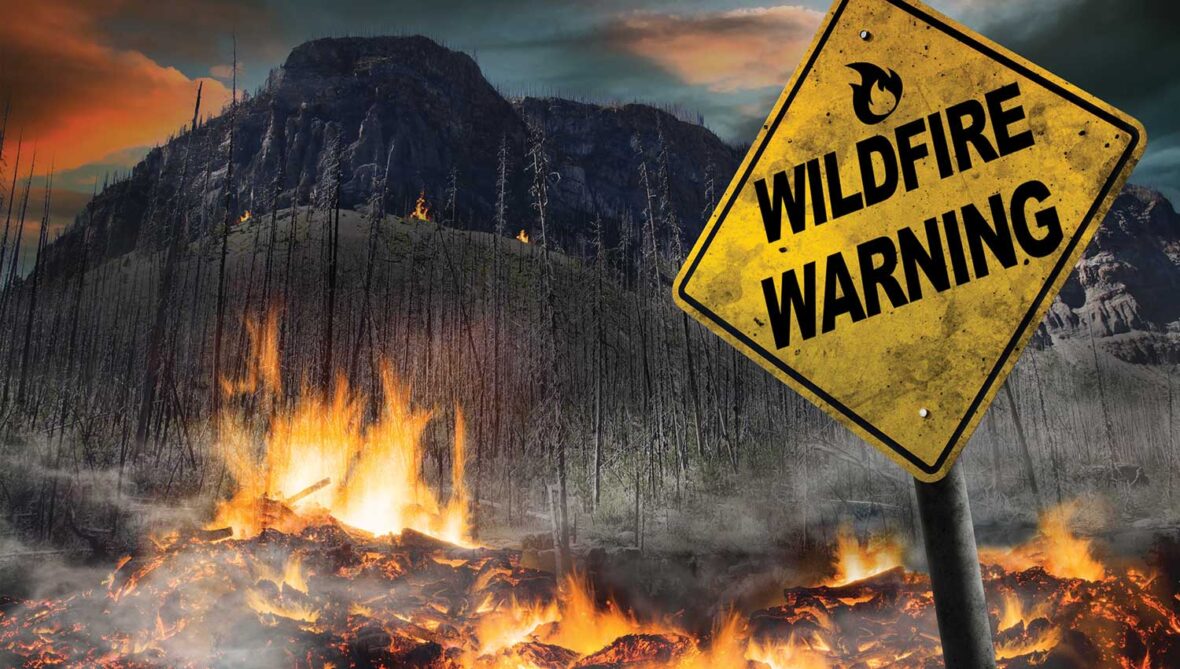
Don’t Wait for the Smoke – The Critical Need for Rapid Wildfire Warning
Listen to article:
Racing the Wind
Wildfires are unpredictable because their behavior is driven by external forces. One spark is enough, and within minutes, large areas can be in danger. Add a sudden change in wind direction, and everything shifts. Wildfires can spread at speeds of up to 20 km/h, and if you’re not warned in time, there’s simply no time to react. In situations like this, every second matters.
To put it in perspective — in grassy terrain, fire can spread even faster, reaching speeds of up to 22 km/h. That’s more than 300 meters per minute. In mountainous or windy areas, the speed increases even more, making response times incredibly short. These numbers aren’t just theoretical; they reflect real scenarios we’ve seen across Europe and around the world.
Telegrafia’s Sirens vs. Standard Warning Systems
Many of today’s warning systems just aren’t fast enough. They’re slow, rely on manual activation, have limited coverage, and often don’t work in remote areas. Worse still — if the power goes out or infrastructure is damaged, they may fail entirely.
At Telegrafia, we chose a different approach. We designed a flexible wildfire warning system built on a combination of three types of sirens: Permanently installed, portable, and mobile. This allows us to warn people quickly, effectively, and practically anywhere — from city centers to isolated forest roads.

The Pavian Sirens Family
Our fixed Pavian sirens are powerful, automated, and can be triggered remotely. Their sound cuts through the noise of urban environments and instantly alerts large populated areas. But when fire conditions change rapidly, we’ve got another ace up our sleeve: the Pavian Portable. These battery-powered sirens are compact, quick to install, and can be placed wherever no warning infrastructure exists.
The most compact of all is the Pavian Car — our mobile siren made for truly critical situations. Mounted on a vehicle roof, it allows responders to move directly into danger zones and broadcast warnings while in motion. It can deliver both live and pre-recorded messages to help coordinate evacuation in real time. Picture a firetruck driving through a community while broadcasting clear evacuation instructions — that’s exactly what Pavian Car is built for.
Wildfire Alert System That Saves Lives
The real strength of this system lies in its flexibility. You don’t have to wait for approvals or manual triggers. Alerts can be automated, fast, and targeted where they’re needed most. Whether in remote mountain villages, tourist zones, or urban areas, the system adapts to the terrain.
To take it even further, today’s technology brings prediction into the equation. Scientists now use artificial intelligence and satellite data to forecast where fires are most likely to start. Models like “Probability of Fire” factor in dryness, wind, human activity, and vegetation type — giving fire response teams a head start. These predictions can be directly linked to alert systems, cutting down response times even more.
According to the United Nations Office for Disaster Risk Reduction, countries with established multi-hazard early warning systems see disaster-related death rates up to six times lower than countries without them. Source: UNDRR, 2023 — a clear sign that investing in technologies like the Pavian sirens has a real and measurable impact.
Fast response saves lives. And today’s technologies can do what wasn’t possible just a few years ago — warn people in real time, even if they’re not home, even without cell coverage, even during blackouts. And that’s exactly what we need when facing the force of wildfire.

The article was written by
Róbert Jakab
Robert is like a moving photograph – because he is like a video. He can capture 60 frames per second. Whenever something happens, he records it. Currently, he’s working on smaller videos and hoping to make a feature film one day and then its sequel. Telegrafia 2: Monkey Power
